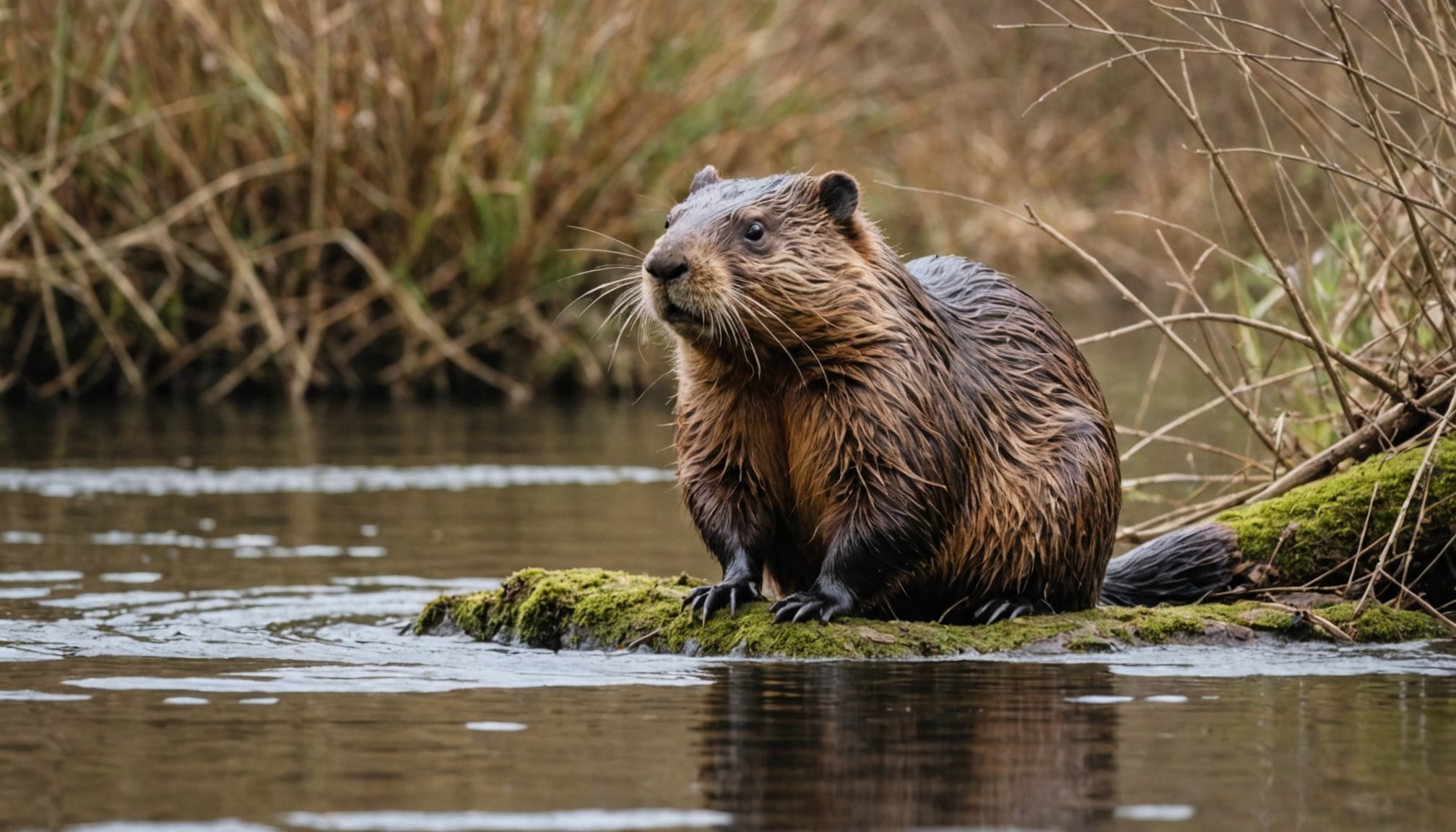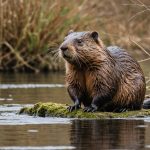Overview of Beaver-Human Interactions
Beavers play a crucial role in maintaining ecological balance. As natural engineers, they create wetlands, which support diverse habitats by providing resources for many species. However, their activities can sometimes clash with human interests, leading to beaver-human conflict. This often occurs when beaver damming results in flooding that affects agriculture or infrastructure.
The importance of conservation efforts arises from the need to protect beavers’ advantageous impact on biodiversity while addressing community concerns. It is crucial to understand the ecological balance that beavers provide and the beaver-human conflict that may ensue. Conservation strategies, such as installing water flow devices, can help mitigate these conflicts by allowing humans and beavers to coexist harmoniously.
In parallel : Transforming uk urban gardens: creative approaches to enhance pollinator habitats and combat declines
Conservation efforts strive to align the interests of both beavers and humans. This includes implementing policies that promote understanding and cooperation, helping communities adapt through innovative solutions. Balancing conservation with community needs ensures that we protect the ecological balance that beavers contribute to, while also recognizing and addressing human needs. Such approaches lead to a sustainable coexistence that benefits both wildlife and people, showcasing the necessity of informed, dynamic conservation initiatives.
Case Studies of Successful Mitigation Strategies
During recent years, the UK has seen innovative solutions and successful case studies in managing beaver populations. Conservationists have played a crucial role by employing detailed strategies that have proven effective over time.
Also to discover : Exploring how urban greening projects enhance bird diversity in uk city centers
One of the notable approaches involves the use of fencing. By installing fences around sensitive areas, conservationists are able to protect agricultural lands while allowing beavers to thrive in designated regions. This dual benefit ensures that the ecological needs and local livelihoods are balanced. Additionally, slope reforestation has been deployed as another effective strategy. Planting trees on slopes has not only mitigated flooding but also improved habitat quality, benefiting beavers and other wildlife.
Community involvement is pivotal in the success of these mitigation strategies. Local residents often participate in conservation activities, providing valuable insights and resources to support these efforts. Their active engagement fosters a sense of ownership and encourages sustainable practices. By integrating community knowledge with scientific strategies, these initiatives have achieved significant strides in beaver management, showcasing the power of collaboration between conservationists and the public.
Challenges Faced by Conservationists
Conservationists encounter numerous challenges in conservation, especially when implementing beaver management strategies. One primary hurdle is the human-wildlife conflict. This conflict arises when beavers impact human activities, such as agriculture and infrastructure, leading to tensions between conservation goals and local communities. Addressing these challenges requires sensitive strategies that balance ecological and human needs.
Public perception is another significant factor affecting conservation efforts. Often, local communities may view beavers negatively, perceiving them as nuisances or threats. Such perceptions can hinder conservation initiatives unless addressed through education and community engagement. Promoting understanding and appreciating the ecological benefits beavers bring can improve their public image and support conservation efforts.
Policy issues also pose a substantial challenge for conservationists. Implementing effective conservation policies often requires navigating complex legal and bureaucratic environments. Conservationists must advocate for policies that support sustainable beaver management while ensuring these decisions align with broader ecological goals. This task necessitates collaboration between government agencies, local communities, and wildlife experts to create a cohesive approach to conservation efforts.
Ecological Impacts of Beavers
Beavers play a crucial role in maintaining biodiversity enhancement. By building dams, these industrious creatures transform landscapes into vibrant ecosystems teeming with life. Their activities in habitat restoration create environments where many species can thrive. Beaver habitats serve as important refuges for local wildlife, including amphibians, birds, and fish, fostering a diverse community.
Research indicates that beavers contribute significantly to aquatic and terrestrial ecosystems. Their dams act as natural water filters and slow down water flow, reducing erosion and improving water quality. These structures also modify environmental conditions, leading to benefits such as increased wetland area and water retention. Such changes support varied plant species, providing food and shelter within the ecosystem.
Furthermore, studies demonstrate that beaver activity has overall ecological benefits by enhancing connectivity between different habitats. This connectivity is essential for wildlife movement and genetic exchange, ensuring long-term stability and resilience in ecosystems. By influencing vegetation patterns, beavers create a mosaic of rich habitats that promote flora and fauna diversification. Understanding the actions and impact of beavers offers insight into their indispensable role in habitat restoration and fostering biodiversity around the world.
Community Engagement and Education
Community involvement is crucial for successful beaver conservation efforts. Engaging local residents can foster a sense of ownership and pride, creating a more robust support system. Public education is key to reducing conflicts and promoting coexistence with these industrious animals. By informing the public about beavers’ ecological contributions, such as water filtration and habitat creation, attitudes can shift from opposition to support.
One effective strategy for community involvement is organising educational workshops and events. These can focus on conservation awareness and are opportunities for locals to learn about sustainable coexistence strategies. For example, community-led initiatives in the UK have collaborated with wildlife experts to offer seminars and nature walks, allowing participants to witness the benefits of beaver activity firsthand.
Additionally, conservation awareness campaigns can utilise social media and local news outlets to reach a broader audience. By sharing stories of successful settlements and addressing common concerns, such efforts can dispel myths and foster a more informed community. Overall, active participation and well-crafted educational programmes can transform community dynamics, facilitating a harmonious relationship between humans and beavers.
Future Directions for Beaver Management
As we look toward future strategies in beaver management, innovative approaches are taking centre stage. A key element is adaptive management, which allows for flexible responses to ever-changing conditions in beaver habitats. This approach not only emphasises learning and adapting but ensures long-term solutions that address both ecological and community needs.
One of the most promising directions is the integration of technology for monitoring beaver populations. Advanced techniques such as drone surveillance and satellite imagery offer precise data, helping in crafting effective management strategies. These technologies enhance our understanding of beaver dynamics, facilitating timely interventions that minimise conflicts with human populations.
Collaboration stands crucial among conservationists, policy makers, and local communities. By forming partnerships, stakeholders can ensure that management practices align with conservation goals while respecting community needs. Inclusive dialogue aids in devising regulations and plans that are sustainable and beneficial to all parties involved. Engaging communities empowers them, fostering stewardship and awareness crucial for long-term success in beaver management.











